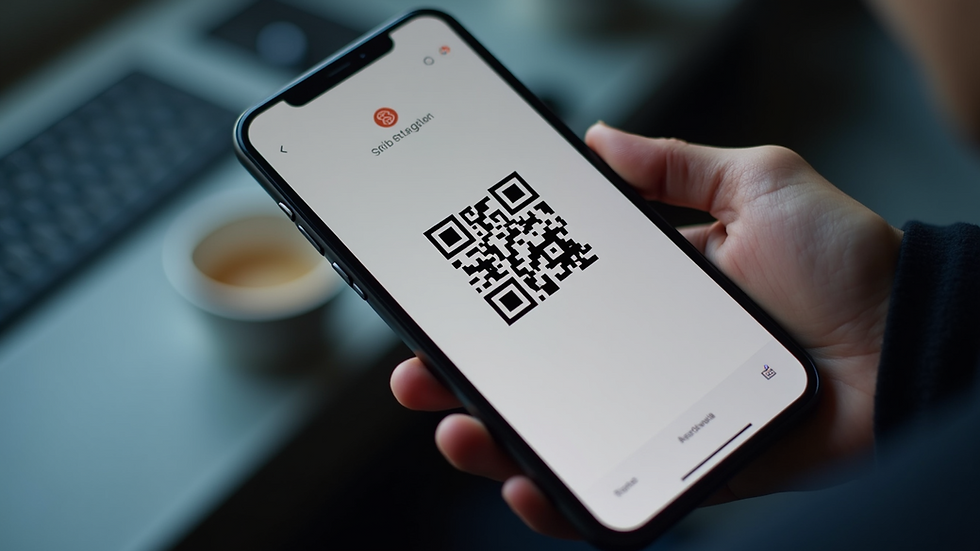Navigating Cryptocurrency for Everyday Transactions
- Hayyzoos
- 6 days ago
- 4 min read
Cryptocurrency is no longer just a buzzword for tech enthusiasts and investors. It is increasingly becoming a practical tool for everyday transactions. From buying coffee to paying for services, digital currencies offer a new way to handle money that is fast, secure, and borderless. However, navigating the world of crypto payments can be confusing for many. This guide will help you understand how to use cryptocurrency in daily life, explore different payment methods, and provide actionable tips to make your crypto experience smooth and efficient.
Understanding Crypto Payments in Daily Life
Using cryptocurrency for everyday transactions means replacing traditional cash or card payments with digital coins like Bitcoin, Ethereum, or stablecoins. The appeal lies in the speed of transactions, lower fees, and the ability to send money globally without intermediaries.
For example, imagine you want to buy a cup of coffee. Instead of pulling out your credit card, you scan a QR code at the café, send the exact amount of cryptocurrency, and the transaction completes in seconds. This process eliminates the need for banks or payment processors, reducing costs and delays.
However, to make this work, both the buyer and seller need to accept crypto payments. Many businesses are now integrating crypto payment systems to attract tech-savvy customers and offer more payment flexibility.

How to Use Crypto Payments Safely and Efficiently
When using cryptocurrency for daily transactions, safety and efficiency are paramount. Here are some practical tips:
Choose a reliable wallet: Use a secure digital wallet that supports multiple cryptocurrencies and has strong encryption. Hardware wallets or reputable mobile wallets are good options.
Verify transaction details: Always double-check the recipient’s address and the amount before confirming a payment. Crypto transactions are irreversible.
Start small: If you are new to crypto payments, begin with small transactions to get comfortable with the process.
Keep track of fees: Some cryptocurrencies have higher transaction fees during network congestion. Choose coins with lower fees for everyday use.
Stay updated: Crypto regulations and technologies evolve rapidly. Keep informed about the latest security practices and legal requirements in your area.
By following these steps, you can minimize risks and enjoy the benefits of crypto payments without hassle.
What is the Best Crypto Payment Method?
Choosing the best crypto payment method depends on your needs, the type of transaction, and the cryptocurrency you prefer. Here are some popular options:
Direct Wallet-to-Wallet Transfers: This is the simplest method where you send crypto directly from your wallet to the merchant’s wallet. It’s fast and cost-effective but requires both parties to have compatible wallets.
Crypto Payment Processors: Services like BitPay or CoinGate act as intermediaries, converting crypto payments into fiat currency for merchants. This reduces volatility risk and simplifies accounting.
Crypto Debit Cards: These cards allow you to load cryptocurrency and spend it anywhere traditional debit cards are accepted. They convert crypto to fiat at the point of sale.
Mobile Payment Apps: Some apps integrate crypto payments with user-friendly interfaces, making it easy to pay with crypto using your phone.
Each method has pros and cons. For example, direct transfers offer privacy and low fees but require technical know-how. Payment processors provide convenience but may charge service fees. Crypto debit cards are versatile but depend on card network acceptance.

Exploring Crypto Payment Options for Businesses and Consumers
Businesses looking to accept cryptocurrency have several options to consider. Integrating crypto payments can attract new customers and reduce transaction costs. Here are some ways businesses can implement crypto payments:
Point of Sale (POS) Systems: Many POS providers now support crypto payments, allowing customers to pay with digital currencies in-store.
Online Payment Gateways: E-commerce platforms can integrate crypto payment gateways to accept payments on their websites.
Invoicing with Crypto: Freelancers and service providers can send invoices payable in cryptocurrency.
Loyalty Programs: Some businesses reward customers with crypto tokens as part of loyalty or referral programs.
Consumers, on the other hand, should explore various crypto payment options to find what suits their lifestyle best. Whether it’s using a mobile wallet app, a crypto card, or direct transfers, having multiple options increases flexibility and convenience.

Overcoming Challenges in Everyday Crypto Payments
Despite the advantages, there are challenges to using cryptocurrency for daily transactions:
Volatility: Crypto prices can fluctuate rapidly, which may affect the value of payments.
Merchant Adoption: Not all businesses accept crypto, limiting where you can spend it.
Regulatory Uncertainty: Laws around cryptocurrency vary by region and can impact usage.
Technical Barriers: Some users find wallets and transactions complicated.
Transaction Speed: Certain cryptocurrencies have slower confirmation times, which can be inconvenient.
To overcome these challenges, consider the following:
Use stablecoins for payments to avoid volatility.
Support and encourage local businesses to adopt crypto payments.
Stay informed about local regulations.
Choose user-friendly wallets and payment methods.
Opt for cryptocurrencies with faster transaction speeds for daily use.
By addressing these issues, crypto payments can become a seamless part of everyday life.
Embracing the Future of Payments with Cryptocurrency
Cryptocurrency is reshaping how we think about money and payments. As more people and businesses adopt digital currencies, everyday transactions will become faster, cheaper, and more secure. Whether you are a consumer looking to pay with crypto or a business wanting to accept it, understanding the options and best practices is key.
Start by exploring different wallets and payment methods, try small transactions, and gradually integrate crypto into your daily routine. With the right approach, navigating crypto payments can open up new possibilities for financial freedom and innovation.
The future of payments is digital, decentralized, and increasingly accessible. Embrace the change and discover how cryptocurrency can enhance your everyday transactions.
.png)






Comments